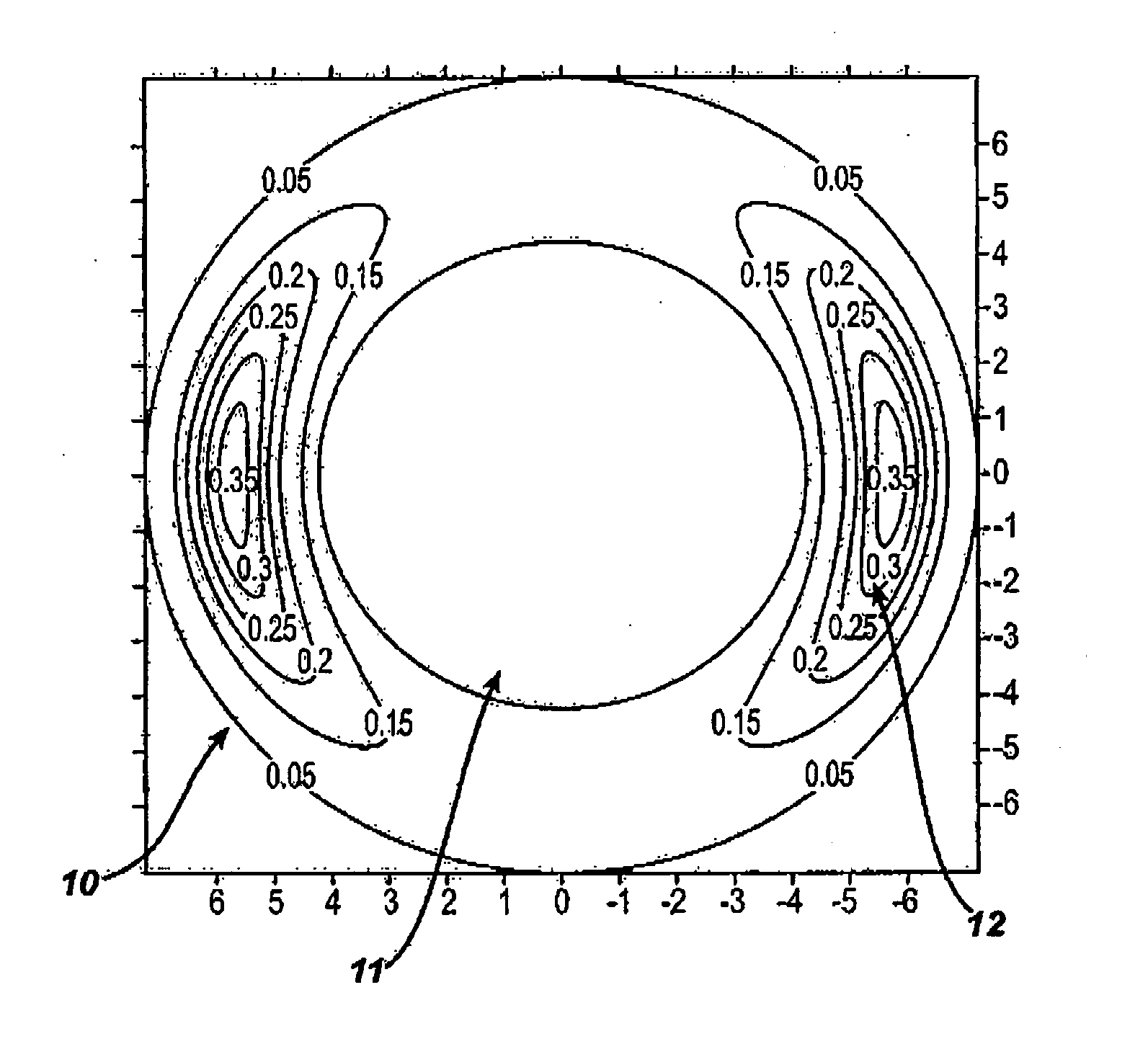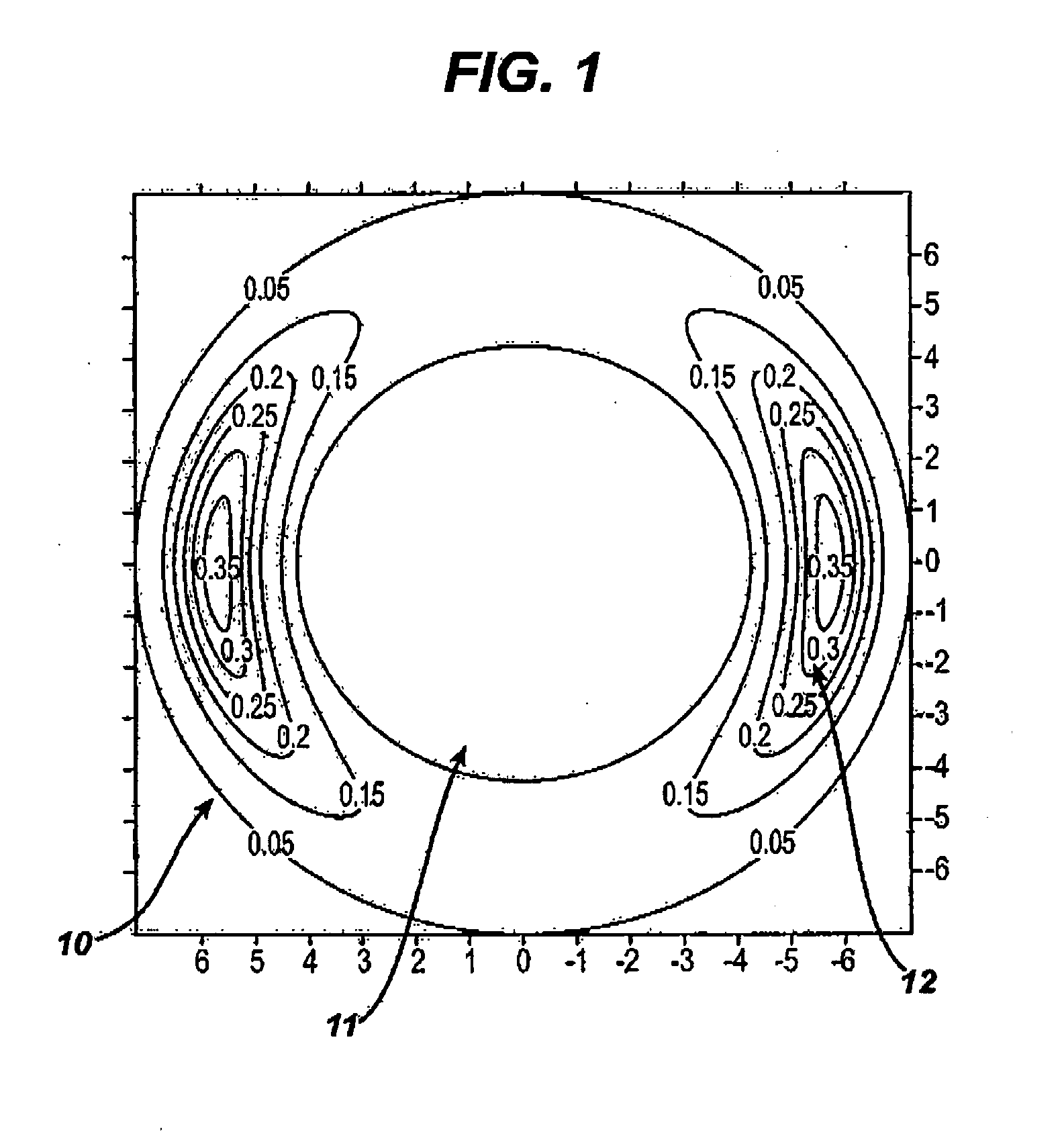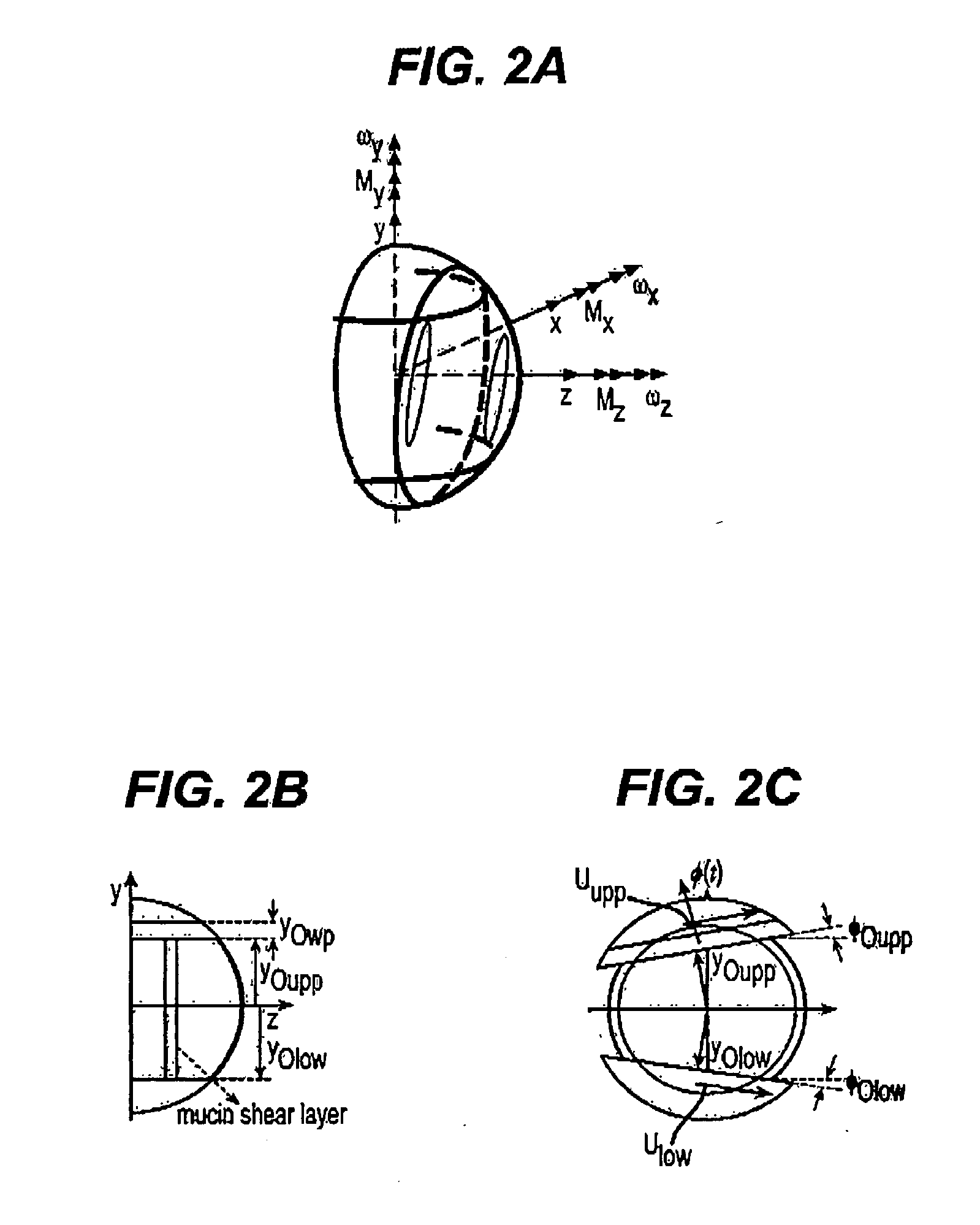Method for stabilizing contact lenses
a technology for contact lenses and lenses, applied in the field of stabilizing contact lenses, can solve the problems of time-consuming and expensive processes
- Summary
- Abstract
- Description
- Claims
- Application Information
AI Technical Summary
Benefits of technology
Problems solved by technology
Method used
Image
Examples
example 1
[0074]A contact lens having a known design for correcting the vision of astigmatic patients is shown in FIG. 6. It was designed using conventional lens design software with the following input design parameters:[0075]Sphere power: −3.00D[0076]Cylinder Power: −0.75D[0077]Cylinder Axis: 180 deg[0078]Lens diameter: 14.50 mm[0079]Front optical zone diameter of 8.50 mm[0080]Back optical zone diameter of 11.35 mm[0081]Lens base curve: 8.50 mm[0082]Center Thickness: 0.08 mm[0083]Eye model parameters used are listed in Table 2A and 2B.
[0084]The stabilization zone is an extra thick zone added to the thickness profile of that lens. The initial stabilization zone is constructed using a combination of normalized Gauss functions describing the radial and angular changes in thickness. The mathematical expression describing the Sag of the stabilization zone in polar coordinates is:
Z(R,θ)=Z0·Exp(-0.5·(r-r0σR)2)·Exp(-0.5·(θ-θ0σθ)2)
[0085]Where Z0 is the maximum magnitude of the stabilization zone, r0...
example 2
[0103]A new stabilization zone was designed using the eye model and optimization method described above and the initial design described in Example. The merit function was defined using[0104]Surface area below the response in rotation.[0105]Surface area below the response in centration.[0106]Identical weight for rotation and centration, WR=WC=1.0.
[0107]The values from which the initial stabilization zone were built were:[0108]Z0=0.25 mm[0109]r0=5.75 mm[0110]σR=0.50 mm[0111]θ0=180 degrees and 0 degrees for left and right stabilization zones, respectively[0112]σθ=25.0 degrees
[0113]The stabilization zone was then added to the original lens thickness profile.
[0114]The stabilization zone was rotated around the peak location until the lens performance characteristics represented a significant improvement over the initial design. The rotation was obtained by applying a coordinate transformation (rotation around the peak location) on the original stabilization zone coordinates:
(x,y)=[Cos(α)...
example 3
[0117]A new stabilization zone was designed using the eye model and optimization method described above and the initial design described in Example 1. The merit function was defined using[0118]Surface area below the response in rotation.[0119]Surface area below the response in centration.[0120]Identical weight for rotation and centration, WR=WC=1.0.
[0121]The values from which the initial stabilization zone were built were:[0122]Z0=0.25 mm[0123]r0=5.75 mm[0124]σR=0.50 mm[0125]θ0=180 degrees and 0 degrees for left and right stabilization zones, respectively[0126]σθ=25.0 degrees
[0127]The stabilization zone was added to the original lens thickness profile.
[0128]An improved stabilization design was obtained in which the final orientation of the stabilization zone was such that the peak location of the stabilization zone was changed angularly around the 0-180 deg. meridian from the geometrical center of the lens as shown in FIG. 6. Stabilization zones are no longer symmetric about the hor...
PUM
 Login to View More
Login to View More Abstract
Description
Claims
Application Information
 Login to View More
Login to View More - R&D
- Intellectual Property
- Life Sciences
- Materials
- Tech Scout
- Unparalleled Data Quality
- Higher Quality Content
- 60% Fewer Hallucinations
Browse by: Latest US Patents, China's latest patents, Technical Efficacy Thesaurus, Application Domain, Technology Topic, Popular Technical Reports.
© 2025 PatSnap. All rights reserved.Legal|Privacy policy|Modern Slavery Act Transparency Statement|Sitemap|About US| Contact US: help@patsnap.com



